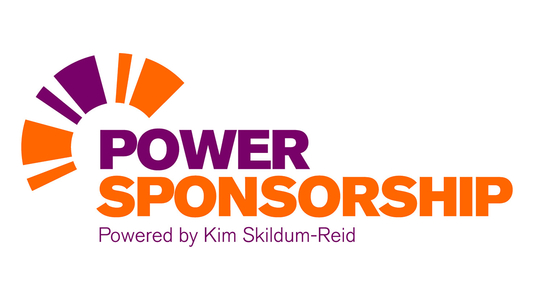

KIM SKILDUM-REID
Author and Expert
Power Sponsorship
Kim Skildum-Reid is a corporate sponsorship strategist and author of several sponsorship marketing books. She is one of the sponsorship industry’s most influential thought leaders. She has a blue chip list of consulting and training clients spanning six continents, is author of global industry bestsellers, "The Sponsorship Seeker’s Toolkit’"and "The Corporate Sponsorship Toolkit", and commentates to major business media around the world. She is also the brains behind industry hub, PowerSponsorship.com. Her recently updated white paper, “Last Generation Sponsorship Redux” has been downloaded hundreds of thousands of times, and reprinted countless times in industry publications. White paper, “Disruptive Sponsorship”, covers the cutting edge trends and technology that drive many of today’s investment decisions. She was a member of two CMO Council advisory boards and a founder of the Australasian Sponsorship Marketing Association where she served as president for its first four years.
CMO COUNCIL: How has sponsorship marketing evolved over the past five years and what predictions do you have for 2024?
KIM SKILDUM-REID: The biggest evolution has been the fact that mainstream marketing has now embraced the very same tenets that have driven best practice sponsorship for two decades. The human-centric approach, empathy, creativity, storytelling, and inclusiveness of disruptive marketing are all hallmarks of best practice sponsorship. And as top marketers have embraced disruptive marketing, they’ve seen that alignment, and started seeing sponsorship as the meaningful, expansive, and powerful medium that it is. On the operational side, Covid had a huge – and positive – impact on how sponsorship works within companies.
First, there’s been a huge shift in the value put on remote fans, because during Covid, all we had were remote fans. But those people were still having a fan experience that could be leveraged; they still had passions to be nurtured. And when restrictions lifted, many companies have continued to nurture those valuable remote markets – markets that had been largely ignored before the pandemic. Another positive, pandemic-driven shift was brands taking the opportunity to get rid of the dead wood in their sponsorship investments, leaving them with lean, efficient portfolios – lean enough that it was realistic to leverage them all. There’s been some backslide with this, which is unfortunate.
CMO COUNCIL: Why is sponsorship marketing still vital, valuable, and relevant for brands seeking to enliven, engage and enrich cross-cultural interaction?
KIM SKILDUM-REID: In 2024, brands that eschew sponsorship are idiots. Yeah, okay… maybe that’s too harsh. But this isn’t a matter of sponsorship “still” being vital, valuable, and relevant. It’s a matter of it being even more vital, valuable, and relevant than it’s ever been. Sponsorship is the most personally relevant, meaningful, and passion-driven of all marketing options. You can use that meaning, that passion, to integrate sponsorship across all or most of your other marketing channels, rendering them more powerful at minimal incremental cost. Sponsorship is authentic. You’re meeting people where they’re at their most passionate, and adding value to experiences they care about, not interrupting that experience.
CMO COUNCIL: What emerging sponsorship sectors and categories are likely to see the most growth, interest and brand support in 2024?
KIM SKILDUM-REID: There are three categories that I think will see a lot of growth in 2024. Two of these categories are already seeing growth – esports and women’s sport – and I think that will carry on. One of the best things about investing in women’s sport is that they tend to be more flexible and responsive to great ideas from sponsors. They don’t tend to have the arrogance of some of the large, entrenched men’s sports, so it’s a great place to get creative. Esports have seen growth in non-endemic sponsorship, but results have been patchy. This isn’t an esports problem, but a brand problem. If a brand walks into esports and hasn’t taken the time to understand the people and the culture around it, they will face – and have faced – fan backlash. Word to the wise: Do your homework.
The last area I think is going to really take off in 2024 is around DEI, ESG, and organizational purpose. I’m not talking about just throwing money at charities to tick some box. I’m talking about investing in well-selected, closely aligned sponsorships, and leveraging them in a way that is both meaningful and demonstrates the company/brand commitment.
CMO COUNCIL: How should marketing leaders make a business case for sponsorship investments?
KIM SKILDUM-REID: First, stop trying to make apples-to-apples comparisons between sponsorship and other media investments. It’s a different animal altogether. Instead, work with stakeholders across the company to build a leverage plan before deciding whether to invest. If multiple stakeholders can see how this adds value to their activities, and commit to leveraging and measuring properly, and can nominate the exact benefits they need to make it work for them, the recommendation to invest becomes very compelling.
CMO COUNCIL: What are the most effective measures and metrics to evidence sponsorship ROI and value creation?
KIM SKILDUM-REID: Much as it has been tried, creating some kind of dollars-to-dollars ratio is counterproductive. It’s based primarily on putting arbitrary values on mechanisms, and it’s fully divorced from the actual objectives brands are trying to achieve. It’s also ridiculous, as aside from direct response, no other media can be measured in this way, much less something as multifaceted as sponsorship. Instead, the focus should be on overall marketing and business objectives – the things you’re measuring now. As various areas of the company – sales, retention, social, HR, etc. – leverage a sponsorship, they should also be nominating the objectives they’re trying to achieve and measuring against those benchmarks. Same for shifting perceptions. Use your brand tracking as the benchmark and ask a few of the exact same questions of people impacted by your sponsorship. The result is a robust, multifaceted measurement report, with most of the data coming from the stakeholders who own and measure the objectives every day.
CMO COUNCIL: How are digital innovations (e.g. AI), global connectivity and social media extensions increasing sponsorship reach, transactional opportunities and business returns?
KIM SKILDUM-REID: If a brand’s approach to emerging and improving technologies is “how can this increase our reach”, they should just get out of sponsorship, because it’s not about reach. If you want reach, just buy a bunch of billboards. Instead, look at emerging and improving technologies as tools to help you add value to your relationships with fans, and increase alignment to your brand. Look for angles to use this tech to get people closer to what they love, make their fan experience better – whether they’re in a stadium or at home, or amplify their voices. Look for scalability, so lots of people can benefit. AI and augmented reality are exceptional tools for this, and they get better every day.
CMO COUNCIL: What data-based tools and platforms are available for matching brands with the optimal sponsorship channels, franchises and events?
KIM SKILDUM-REID: Dozens upon dozens of these matching platforms have been launched, only to die a fast and unceremonious death. Why? Because sponsors don’t use them. The matching mechanisms are based on benefits and demographics, rendering them useless when meaning, creativity, and hyper-customization is the expectation of any shrewd sponsor. Instead, create great sponsorship guidelines, so you get fewer, better proposals. Be proactive with properties that interest you, providing them with guidelines and asking for a customized proposal. And if you’re interested in summertime arts festivals in Bristol, just google it. Where data comes in is around really understanding your customer base – what drives them, what they care about and why. Once you understand that, and develop empathy for them, the process becomes much more straightforward.
DOWNLOAD: "What Every CMO Needs to Know About Sponsorship", a White Paper by Kim Skildum-Reid
